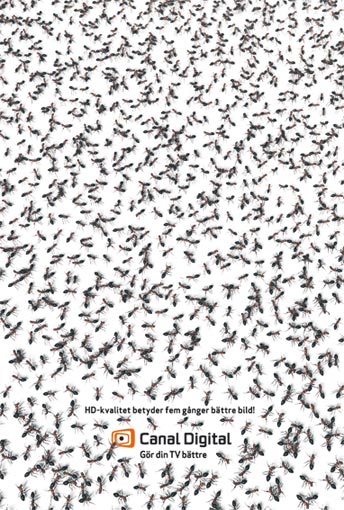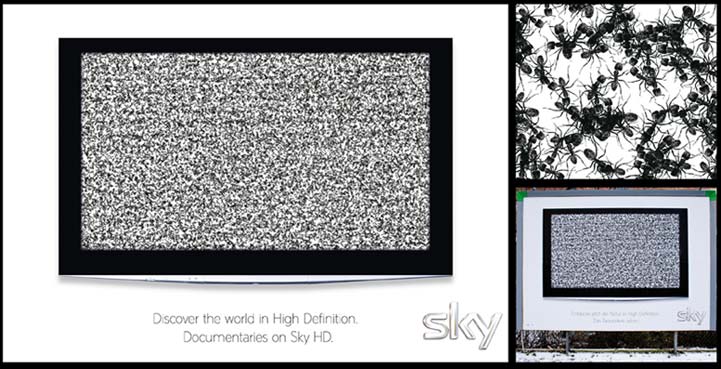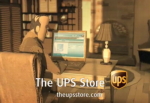 I have been applying to various agencies, consulting firms, digital design houses, and the like, and one of the so-called Human Resources’ policies has moved on my “corporate irritation scale” from irk’d off to pissed off. For the sake of this writing, I include only the personnel departments at advertising, marketing, online agencies, vendors, and companies as the places I’ve been focusing upon.
I have been applying to various agencies, consulting firms, digital design houses, and the like, and one of the so-called Human Resources’ policies has moved on my “corporate irritation scale” from irk’d off to pissed off. For the sake of this writing, I include only the personnel departments at advertising, marketing, online agencies, vendors, and companies as the places I’ve been focusing upon.
When did it become standard for HR Departments to determine they need not respond to applicants? Doesn’t this seem a bit counterproductive, especially at a time when companies are refocusing their entire efforts on personalizing relationships, speaking to their audiences on a one-to-one basis?
Professional glut
 During the past year, many professionals have been let go, from C-level executives on down. Thus, there’s been a glut of qualified pros searching. As a professional, when I fill out an application and submit my résumé (usually using Taleo or some other third-party vendor), a cover letter, and samples in a nice package, it’s indicative I either know your company well and am an “enthusiast,” or I’ve researched it enough to realize there’s strong potential for both parties to match on various levels, creating a win-win situation.
During the past year, many professionals have been let go, from C-level executives on down. Thus, there’s been a glut of qualified pros searching. As a professional, when I fill out an application and submit my résumé (usually using Taleo or some other third-party vendor), a cover letter, and samples in a nice package, it’s indicative I either know your company well and am an “enthusiast,” or I’ve researched it enough to realize there’s strong potential for both parties to match on various levels, creating a win-win situation.
Thus, I submit what’s required when I apply at XYZ. Not two seconds later, I receive an e-mail stating that after review, if my qualifications are a match, I may hear from someone. Otherwise, due to the volume of applicants, I will not hear another word. First off, this is not only rude, but belittling. I have 11 years experience, and if I qualify, you may contact me? I cut my chops. I have respected your requests, filled out your paper in addition to submitting my own, and you “may” get back to me? It’s at this point I regret applying, job or no job.
A week passes.
Follow-up is key (if you can)
I call the office switchboard. I’m dumped into the HR general voicemail. No once calls back. Knowing I already have no contacts within the organization, I try to figure out if there is another way to get past the wall of silence. I begin to dial the main number with a ploy to speak to the Marketing VP I just looked up on LinkedIn.
While waiting, I wonder what’s transpired. Is the job closed? How many applicants applied? Are they still accepting applications? Was my résumé submitted correctly? Was there something that screamed out I was wrong for the position? Did I make it to the final first cut, only to be weeded out due to my salary requirements?
I leave a voicemail for the VP. After a couple weeks without contact, I make a note on my spreadsheet that no one ever responded and move on to another opportunity.
Social media
Surprisingly, I see a lot of HR people using social media, especially on LinkedIn, Twitter, and blogs. To me, this states that HR departments are versed in basic social-media tenets:
- Listen.
- Ask questions.
- Listen some more.
- Initiate on-to-one communication.

HR departments use social media to recruit. Why then is it so difficult to get anyone to respond? Why do I have to call the VP of Marketing to get a response, knowing at this point my job hopes have just been shot down?
HR peeps I know say it’s due to the massive amount of résumés they receive, and they’re too busy.I have to say this is a cop out.
Everyone is busy, everyone does more with less, and times are tense. However, most people at a business (with one exception) cannot risk ignoring anyone who contacts them, especially in an industry as fickle as this one.
WWJD, or what would Jeff do? (the solution)
As HR is capable of using social media for recruiting, then why not use social media to keep job posts updated?
It’s efficient, simple, and effective. Set up a blog page with job updates. Send out Twitter updates that a position’s been filled. Write a Facebook App that will cross-reference a job number with a status update. Have a prerecorded job line that applicants can call to learn of any updates.
Problem Solved.
Jeff Louis: Media Planner, Brand Project Manager, blogger, and aspiring writer. Please leave a comment or follow him on Twitter. As always, thanks for reading.












 The recession has either changed the way advertisers do business or has forced us to reevaluate the ways in which we do business. The focus has shifted to the effectiveness and efficiency of an ad campaign rather than stressing the campaign or ad variables such as reach and effective frequency.
The recession has either changed the way advertisers do business or has forced us to reevaluate the ways in which we do business. The focus has shifted to the effectiveness and efficiency of an ad campaign rather than stressing the campaign or ad variables such as reach and effective frequency.

 Life just keeps getting weirder and weirder. One day, boobs are good; the next, they’re banned in Britain on billboards for their portrayal of headlamps. Britain is the last place you would think the girls would be put away. Britain is (in)famous for its portrayal of plunging-cleavage shots on TV shows such as
Life just keeps getting weirder and weirder. One day, boobs are good; the next, they’re banned in Britain on billboards for their portrayal of headlamps. Britain is the last place you would think the girls would be put away. Britain is (in)famous for its portrayal of plunging-cleavage shots on TV shows such as
 benefits derived from its distinguishing characteristics. Its theme, “The right tire changes everything,” aims to drive this point home.
benefits derived from its distinguishing characteristics. Its theme, “The right tire changes everything,” aims to drive this point home. In case you were unaware, the competition for the 2016 Olympics host city’s been won and the waiting is over.
In case you were unaware, the competition for the 2016 Olympics host city’s been won and the waiting is over. Competition between Rio and Chicago was especially fierce, and accusations of unfair play were voiced by both sides: One of the larger controversies a website
Competition between Rio and Chicago was especially fierce, and accusations of unfair play were voiced by both sides: One of the larger controversies a website 


 I have been applying to various agencies, consulting firms, digital design houses, and the like, and one of the so-called Human Resources’ policies has moved on my “corporate irritation scale” from irk’d off to pissed off. For the sake of this writing, I include only the personnel departments at advertising, marketing, online agencies, vendors, and companies as the places I’ve been focusing upon.
I have been applying to various agencies, consulting firms, digital design houses, and the like, and one of the so-called Human Resources’ policies has moved on my “corporate irritation scale” from irk’d off to pissed off. For the sake of this writing, I include only the personnel departments at advertising, marketing, online agencies, vendors, and companies as the places I’ve been focusing upon. During the past year, many professionals have been let go, from C-level executives on down. Thus, there’s been a glut of qualified pros searching. As a professional, when I fill out an application and submit my résumé (usually using Taleo or some other third-party vendor), a cover letter, and samples in a nice package, it’s indicative I either know your company well and am an “enthusiast,” or I’ve researched it enough to realize there’s strong potential for both parties to match on various levels, creating a win-win situation.
During the past year, many professionals have been let go, from C-level executives on down. Thus, there’s been a glut of qualified pros searching. As a professional, when I fill out an application and submit my résumé (usually using Taleo or some other third-party vendor), a cover letter, and samples in a nice package, it’s indicative I either know your company well and am an “enthusiast,” or I’ve researched it enough to realize there’s strong potential for both parties to match on various levels, creating a win-win situation. As the death knell sounds for the evening news, there may be a few culprits to blame who have gone unmentioned. One of them is advertising.
As the death knell sounds for the evening news, there may be a few culprits to blame who have gone unmentioned. One of them is advertising. Just how many advertising messages are we exposed to on a daily basis? In Data Smog, author David Skenk writes that the average American’s exposure to advertising has grown from “560 daily advertising messages in 1971. By 1997, that number had increased to over 3,000 per day.”
Just how many advertising messages are we exposed to on a daily basis? In Data Smog, author David Skenk writes that the average American’s exposure to advertising has grown from “560 daily advertising messages in 1971. By 1997, that number had increased to over 3,000 per day.” The Tracy Awards were conceived by Salt Lake City ad agency
The Tracy Awards were conceived by Salt Lake City ad agency  Football is here, the glorious season of games, players, stadiums, grill-outs, and beer. What many people don’t realize is that it’s also the beginning of the newest advertising campaigns. Yes, we all know that the Superbowl is a haven for new, witty commercials, but what about the rest of the season?
Football is here, the glorious season of games, players, stadiums, grill-outs, and beer. What many people don’t realize is that it’s also the beginning of the newest advertising campaigns. Yes, we all know that the Superbowl is a haven for new, witty commercials, but what about the rest of the season?